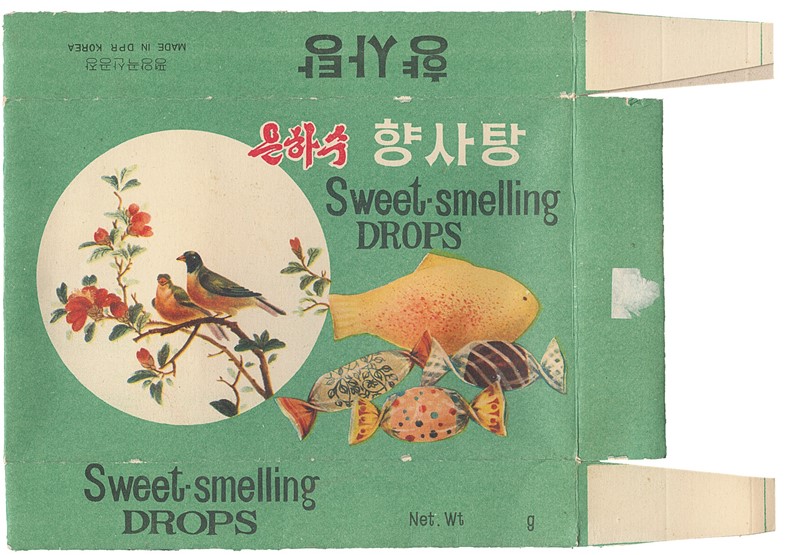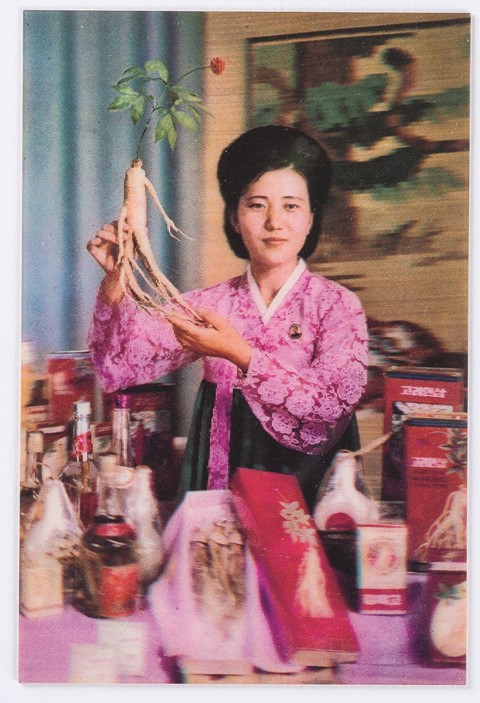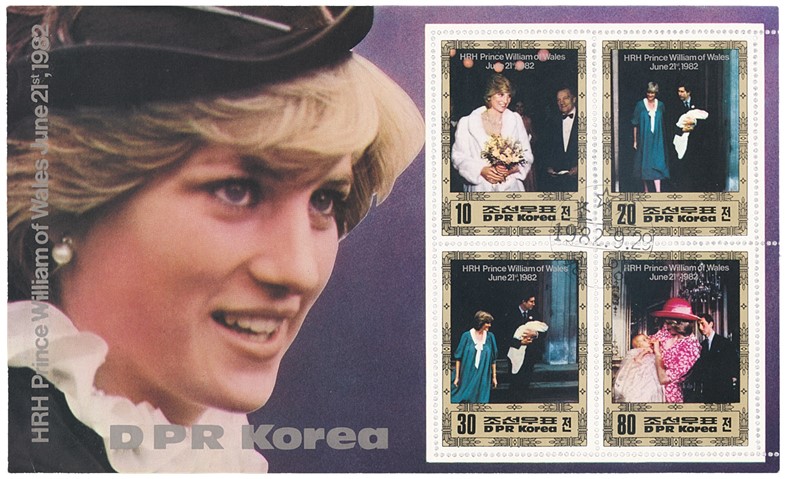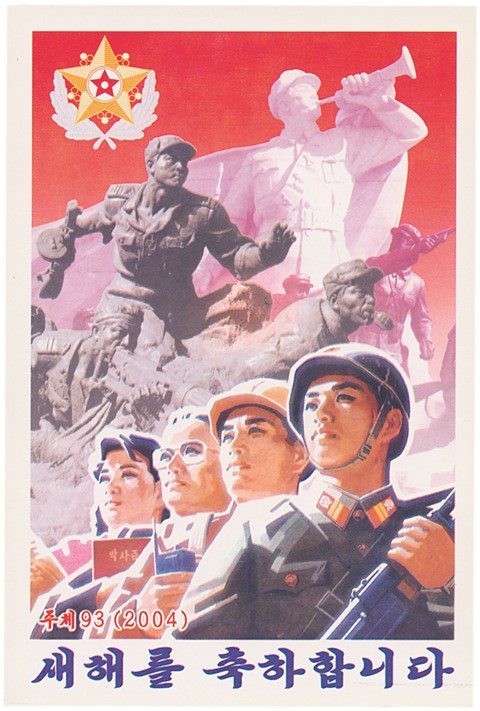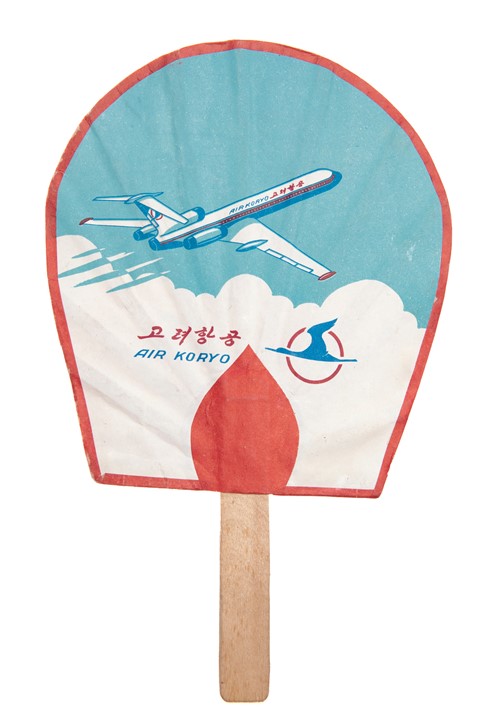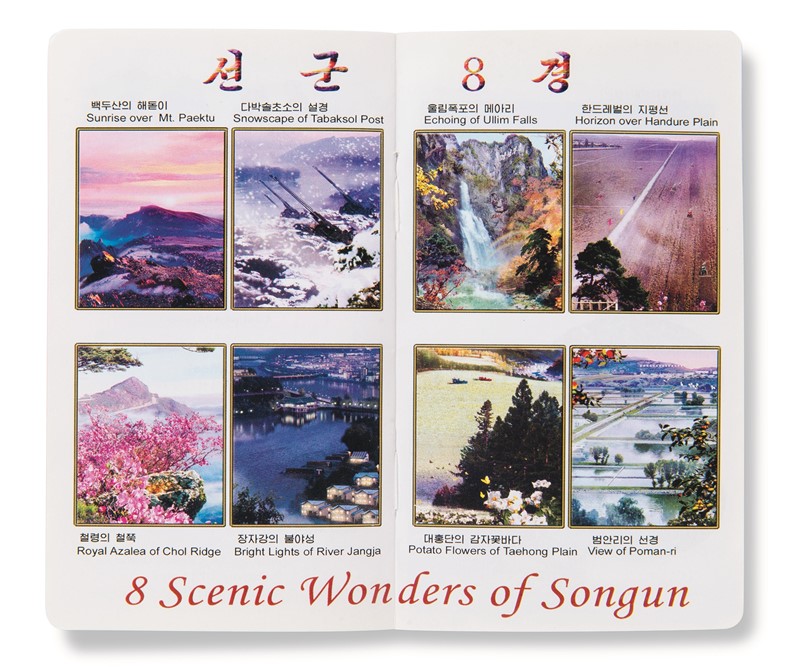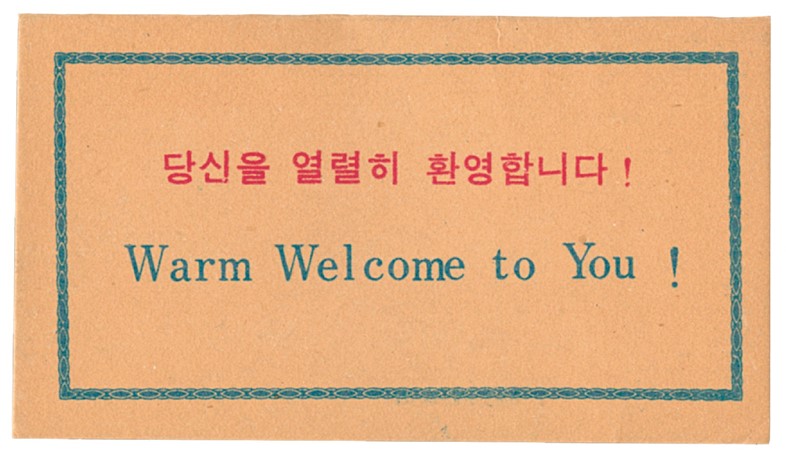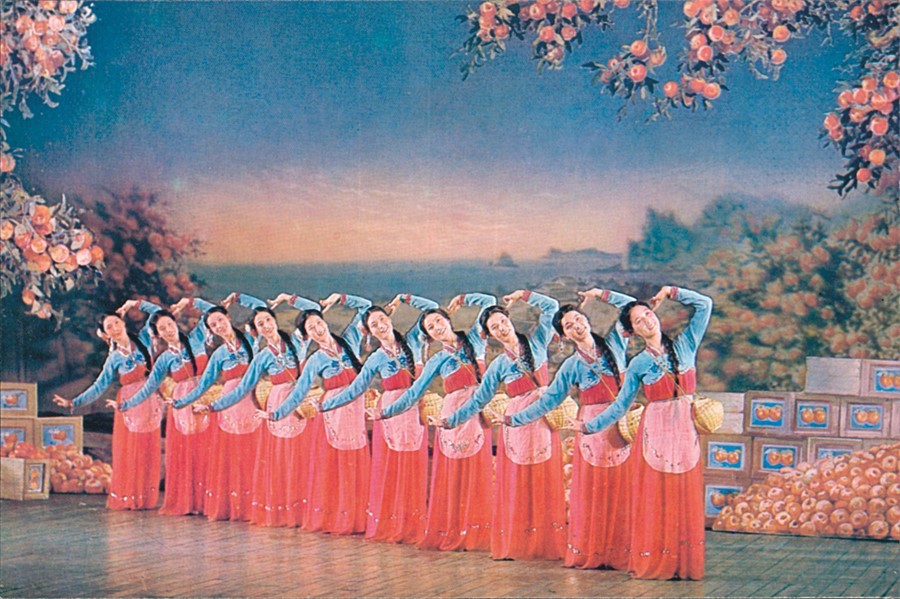A candy-hued new volume documents the vast hoard of sweet wrappers, propaganda postcards and liquor ads collected by filmmaker, club-runner and founder of North Korean tourist board Koryo Tours, Nicholas Bonner. Just a few years after the country lifted its ban on Western tourists in 1987, Bonner embarked on a long-term infatuation with isolated North Korea. Each item reproduced in Phaidon’s Made in North Korea serves as a record of the country’s singular approach to media; its attempt to eschew the influence of foreigners, while taking design inspiration from Eastern Bloc propaganda, Buddhism and Confucianism, resulting in an aesthetic unlike any other country in the 1990s.
This decade saw fewer than 100 tourists visit the region per year, a fact Bonner was determined to change with his agency. At the time, itineraries were carefully planned in advance: tour groups would be flanked by two guides and a driver at all times and passports were retained by the authorities for the duration of a trip. Bonner, meanwhile, was co-directing the country’s “first girl power film”, Comrade Kim Goes Flying, and producing a documentary following the elusive North Korean football team, and enjoying unprecedented, unchaperoned access. He collected swathes of ephemera, from food tin labels to sweet boxes, airplane sick bags, salt and pepper packets, stamp books and foil cigarette packs, many of which would have been technically unavailable to him since it was forbidden for tourists to use local currency. The ensuing compilation of curiosities offers a portrait of a country in a state of rapid flux, as tourism and commercial competition – two long-suppressed elements of society – inflated.
Described by the author as a personal and subjective collection rather than a comprehensive one, Bonner’s collation comprises ephemera that spans his first visit to North Korea in 93 and wraps up in around 2005, when hand-designed graphic imagery gradually became replaced by computer-generated alternatives. The results are as pleasing as they are educational, a loving tome dedicated not to the fetishisation of otherness but, as Bonner writes, to a country that “punches above its weight” when it comes to all aspects of design.
Made in North Korea, by Nicholas Bonner is out now, published by Phaidon.
